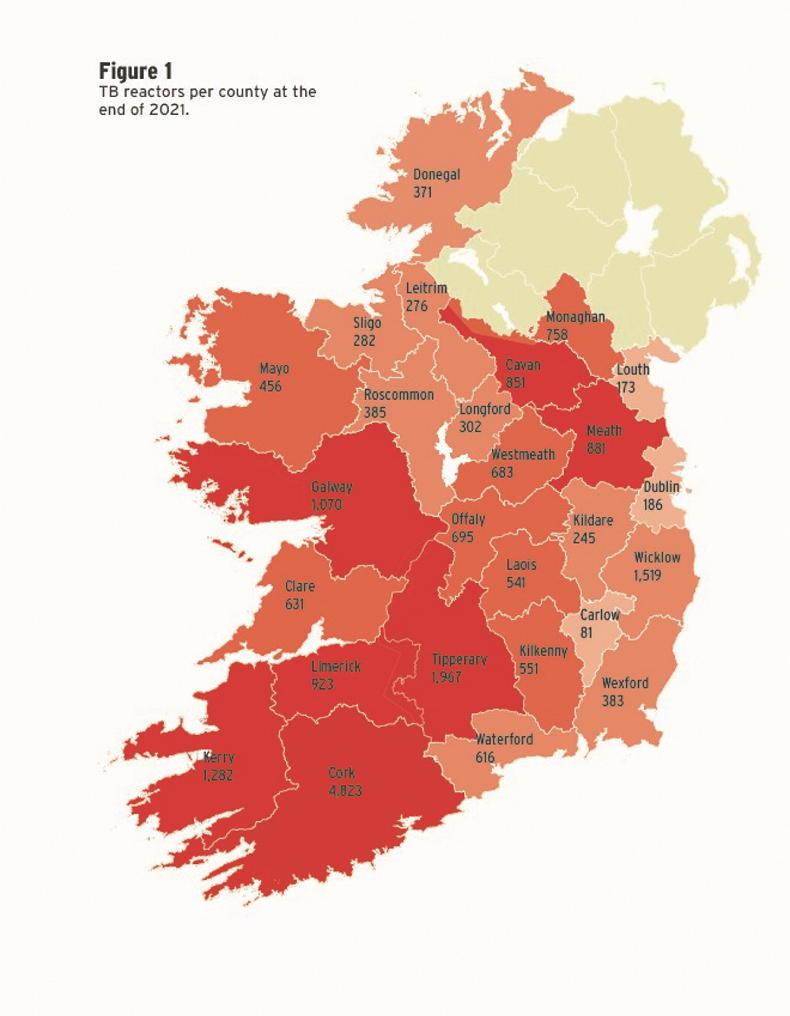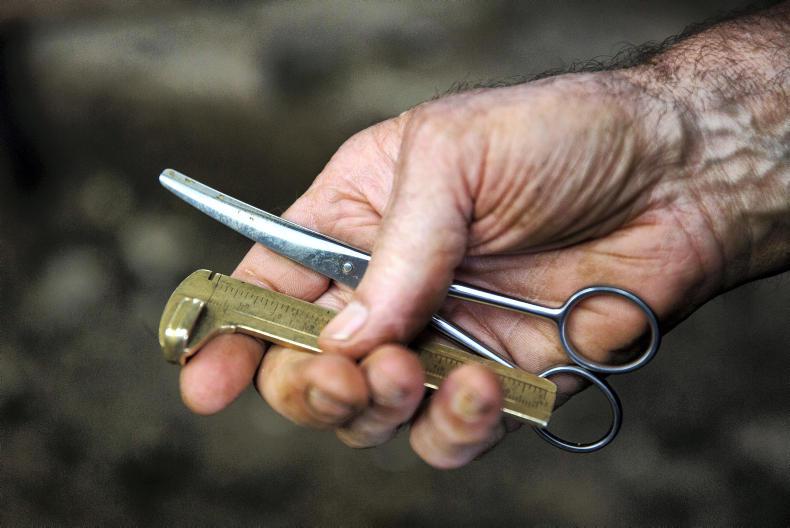The number of TB reactor cattle in the Republic of Ireland in 2021 fell marginally from 22,614 head in 2020 to 20,931 last year, new figures from the Department of Agriculture show.
This is the first annual decrease in TB since levels starting rising in 2016.
Co Cork had the highest number of reactors last year with 4,823. It was followed by Tipperary with 1,967 and Wicklow with 1,519.
Reactor numbers in Kerry last year stood at 1,282 and 1,070 in Galway. The counties with the lowest number of reactors were Carlow (81), Louth (173) and Dublin (186).
A total of 4,675 herds were restricted as of 31 December last, down 78 on 2020.
Herd incidence, the number of herds which experienced a new TB breakdown, fell marginally last year to 4.33% from 4.38%.
In west Wicklow, herd incident stood at 18.11% last year, the highest nationally. Herd incidence in east Wicklow was 8.34%.
In Cork north, herd incidence was 8.76% for the year and it was 6.06% in Cork south.
New herd restrictions were most concentrated in east Cork, the Cavan-Meath border and in Co Monaghan.
A total of 109,836 herds were tested in 2021, containing 9.2m animals.
TB reactors up in NI
In Northern Ireland (NI), rates of bovine TB continue to run at around twice that of the south, with herd incidence across 2021 standing at 8.85%, up from 8.44% in 2020.
There were 1,968 new TB reactor herds in 2021, with a total of 14,355 cattle testing positive at TB tests, up nearly 12% on the 12,852 from 2020. It is the highest number of reactors since 2018.
The figures are not split by county, but by Divisional Veterinary Office (DVO) area. Newtownards DVO, which covers much of mid and north Down, had the highest incidence in 2021 of 11.76%, followed by Ballymena DVO (mid and north Antrim) at 10.61%. The lowest incidence is in the north-west, with Derry DVO at 4.45%.
A new TB eradication strategy for NI was published in March 2022, with NI Agriculture Minister Edwin Poots committing to a range of new policies, including a cull of badgers in TB hotspot areas.

TB reactor map 2022.
The number of TB reactor cattle in the Republic of Ireland in 2021 fell marginally from 22,614 head in 2020 to 20,931 last year, new figures from the Department of Agriculture show.
This is the first annual decrease in TB since levels starting rising in 2016.
Co Cork had the highest number of reactors last year with 4,823. It was followed by Tipperary with 1,967 and Wicklow with 1,519.
Reactor numbers in Kerry last year stood at 1,282 and 1,070 in Galway. The counties with the lowest number of reactors were Carlow (81), Louth (173) and Dublin (186).
A total of 4,675 herds were restricted as of 31 December last, down 78 on 2020.
Herd incidence, the number of herds which experienced a new TB breakdown, fell marginally last year to 4.33% from 4.38%.
In west Wicklow, herd incident stood at 18.11% last year, the highest nationally. Herd incidence in east Wicklow was 8.34%.
In Cork north, herd incidence was 8.76% for the year and it was 6.06% in Cork south.
New herd restrictions were most concentrated in east Cork, the Cavan-Meath border and in Co Monaghan.
A total of 109,836 herds were tested in 2021, containing 9.2m animals.
TB reactors up in NI
In Northern Ireland (NI), rates of bovine TB continue to run at around twice that of the south, with herd incidence across 2021 standing at 8.85%, up from 8.44% in 2020.
There were 1,968 new TB reactor herds in 2021, with a total of 14,355 cattle testing positive at TB tests, up nearly 12% on the 12,852 from 2020. It is the highest number of reactors since 2018.
The figures are not split by county, but by Divisional Veterinary Office (DVO) area. Newtownards DVO, which covers much of mid and north Down, had the highest incidence in 2021 of 11.76%, followed by Ballymena DVO (mid and north Antrim) at 10.61%. The lowest incidence is in the north-west, with Derry DVO at 4.45%.
A new TB eradication strategy for NI was published in March 2022, with NI Agriculture Minister Edwin Poots committing to a range of new policies, including a cull of badgers in TB hotspot areas.

TB reactor map 2022.








 This is a subscriber-only article
This is a subscriber-only article










SHARING OPTIONS: